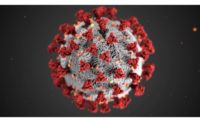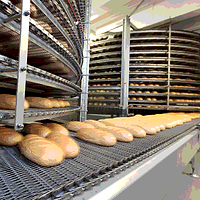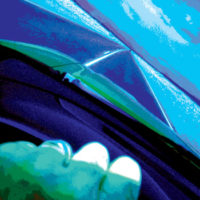SSOPs for the Retail Food Industry

The obvious basis of the art and science of food safety is contamination control. Those of us who work in the regulatory community and in quality control know that contamination control translates into oversight of general sanitation, punctuated by antisepsis (hand washing), disinfection and sanitization. The latter, sanitation, being a "safe" level of microbes as defined by public health convention. We constantly evaluate "how clean is clean?" and ascribe some subjective value to what we see and feel. Or do we?
The interpretation of retail food establishment codes use "clean to sight and touch" as the operative phrase in most of our work and we apply it to physical, chemical and biological soil removal. We use this very subjective standard to evaluate microbiological cleanliness as long as some final degerming step is used.
I recently was at an excellent conference attended by state, county and local sanitarians where I happened to listen to a presentation about mechanical dishwashers. At the end of this session, the questions posed to the presenters were almost exclusively about chemical and thermal disinfection; there were none about the actual cleaning action of the dish machines or the various surfactants and rinse adjuncts used in them. It became evident that in the retail food industry, contamination control often focuses exclusively on disinfection and sanitization rather than on cleaning. This is all too pervasive. All too often, the act of disinfection alone determines the level of compliance with acceptable rules and regulations. Unfortunately, we don’t routinely look at the process of sanitation ahead of sanitization—unless the level of cleanliness leaves much to be desired. We are sometimes more concerned with the "magic juice" in the mop bucket than with the cleanliness of the water or the mop head used, or the way the solution is applied to the surface to remove soil. The reality to this is the following: if it’s not clean, it can’t be effectively disinfected.
Solutions for Retail Food
We do not universally require sanitation standard operating procedures (SSOPs) for the retail food industry, although some chain operations and larger venues already have them. Overall, the majority of restaurants and retail vendors do not. In fact, we don’t require hygiene or sanitary zones, laboratory verification, material and personnel flow control or even demand that we use the principles of sanitary design for the places we all frequent, although these concepts are part of all food processor requirements. Street HACCP helps, a formal HACCP program helps even more, but at the retail level, the SSOP is not necessarily a part of them. Additionally, an aggressive plan review conducted by the local regulatory agency further helps reduce the risk of foodborne infections, but plan and menu reviews are mostly completed at the building stage of the operation or when it undergoes remodeling. Therefore, I sincerely believe that it is time to introduce SSOPs, or some abbreviated version thereof (that includes some details on personnel training), such as "Street SSOPs" that follow the same format as Street HACCP, to this segment of the industry.
To achieve this, the retail industry needs to partner with the regulators—and regulators with the retail industry. Sanitarians need to provide initial guidance, monitoring techniques and parameters and, ultimately, some form of oversight. This will require some financial investment by all parties, but consider the emerging risks. We are well aware of more ready-to-eat and quantity ethnic foods made and sold at the local level. The Food Code doesn’t exactly cover either in a comprehensive manner. Rather, we are seeing more situations that require interpretation for which an SSOP could help. That being said, any manufacturing environment needs an SSOP as an adjunct to its HACCP program.
Developing an Effective SSOP
I would like to offer the retail food industry and local sanitarians an approach to develop an SSOP that would be tailored to the operation. The good news is that we do not have to reinvent the wheel. A Google search shows well over 200,000 hits on some aspect of this essential component to sanitation. So we have the framework; the devil is in the details.
While I realize that general cleaning and sanitization is more encompassing and a lot more objective than we assume, we now have a good model to approach this task. This approach is called integrated cleaning and measurement (ICM) that was recently developed by a consortium of microbiologists, sanitarians and housekeeping professionals through the sponsorship of KaiScience. ICM is an open-source system that produces better, healthier and synergistic results as validated by scientific measurement. Open source is basically using the best methods with the most applicable chemicals in a structured and programmed manner. This means that any effective cleaning methodology used in conjunction with the most appropriate cleaning chemicals will yield the best outcome. For example, many operators within the retail food community limit themselves to a cationic “quat” cleaner/disinfectant that has limited efficacy on fats. With ICM, that same operator would use a wider spectrum of alkaline and acid cleaners along with anionic and non-ionic wetting agents to remove the various types of soils found in his or her establishment, be it restaurant, institution or catering business.
Of equal importance is measuring the level of cleanliness achieved through the cleaning process (including biofilm removal). By objectively assessing how clean is clean, we can effectively reduce the use of economic poisons such as chemical disinfectants and still achieve the desired level of microbiological safety through cleaning alone. And since we can now consistently validate the cleaning outcomes, we can document the risk reduction for cross- and environmentally mediated contamination.
Finally, the result of integrated cleaning can now be objectively measured using readily available and relatively inexpensive technologies. The recent advances in ATP bioluminescence detection systems are primary among all measuring tools. It allows us to measure total biomass before and after the cleaning process and, by association, the reduction of bioburden. It allows us to evaluate the cleaning process itself and can substantiate changes in products, equipment and techniques. The ATP bioluminescence monitor, along with a combination of temperature, pH and conductivity, gives us the necessary information for effective chemical use dilution and its application. Readily available dip sticks and spot tests that examine the presence of proteins and carbohydrates can provide additional data for cost-effectiveness and cost-efficiency. However, measurement does not necessarily end there. Effective quantitative evaluations of cleaning also integrates an organoleptic examination by using the senses of sight, touch and smell, enhanced through the use of bright-white LED and UV lights along with cotton tipped swabs and alcohol wipes, just to name a few tools. Very much like color change measurement for sanitizers, the organoleptic examination can be quantified by observing the color and shading of visible dirt remaining on the establishment’s surfaces, and using the establishment’s surfaces as a reference point. We already do this in evaluating soils for sub-surface sewage disposal, fabric cleanliness and a host of other environmental entities and conditions. The level of cleanliness can be both measured and quantified.
If done correctly, the SSOP, even as a rudimentary document that is tailored to the individual establishment, along with the basic supporting measurement data, provides the basis for a more comprehensive, environmentally mediated foodborne illness risk-reduction initiative. It’s an idea whose time has come and indeed is long overdue.
Forensic sanitarian Robert W. Powitz, Ph.D., MPH, RS, CFSP, is principal consultant and technical director of Old Saybrook, CT-based R.W. Powitz & Associates, a professional corporation of forensic sanitarians who specialize in environmental and public health litigation support services to law firms, insurance companies, governmental agencies and industry. For more than 12 years, he was the Director of Environmental Health and Safety for Wayne State University in Detroit, MI. He also served as Director of Biological Safety and Environment for the U.S. Department of Agriculture at the Plum Island Animal Disease Center at Greenport, NY. Among his honors, Powitz was the recipient of the NSF/NEHA Walter F. Snyder Award for achievement in attaining environmental quality, and the AAS Davis Calvin Wagner Award for excellence as a sanitarian and advancing public health practice. He is the first to hold the title of Diplomate Laureate in the American Academy of Sanitarians, and is a Diplomate in the American Academy of Certified Consultants and Experts and with the American Board of Forensic Engineering and Technology.
Dr. Powitz welcomes reader questions and queries for discussion in upcoming columns, and feedback or suggestions for topics you’d like to see covered can be sent to him directly at Powitz@sanitarian.com or through his website at www.sanitarian.com.
Looking for a reprint of this article?
From high-res PDFs to custom plaques, order your copy today!






